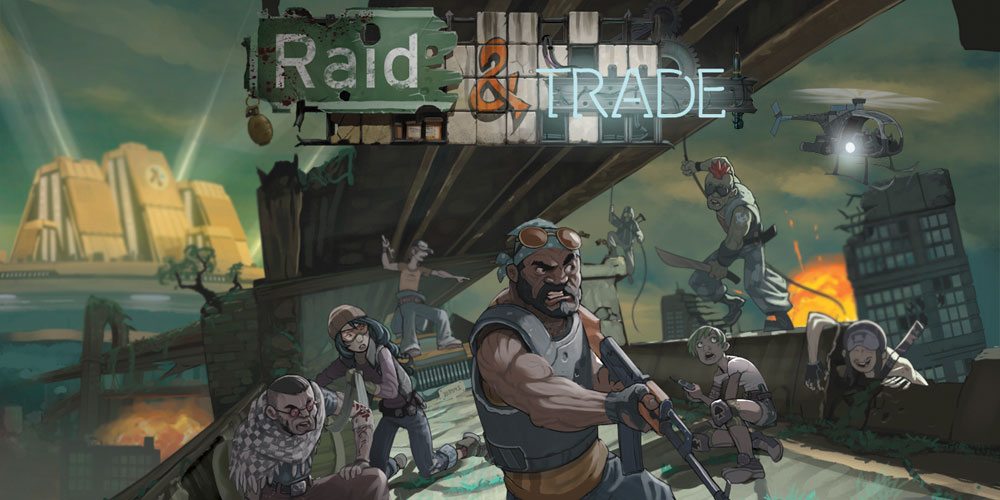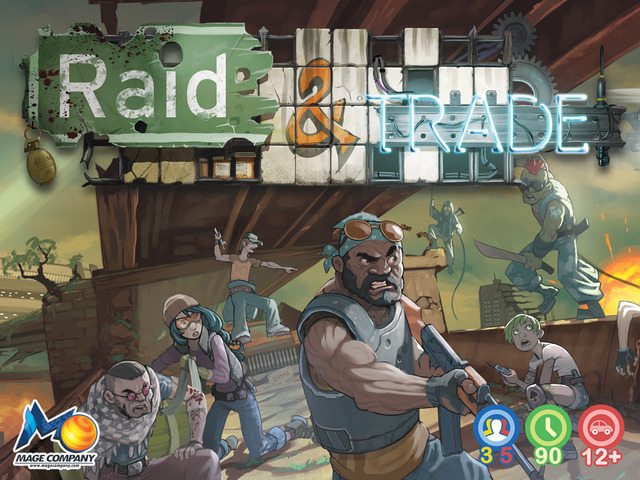In this post-apocalyptic world (haven’t you read about it yet?), everyone’s trying to survive long enough to make it into the Golden City, either by building up their reputation, by fulfilling missions, or just sheer skill. Raid & Trade is a board game now on Kickstarter from Mage Company.
At a glance: Raid & Trade is for 3 to 5 players, ages 12 and up, and takes about 90 minutes to play. The base pledge for a copy of the game is $50, with lots of add-ons available like painted minis, metal discs, extra dice, and so on. The estimated delivery date is June 2015. The age rating is probably about right; you could play with younger players if they’re fairly experienced, but Raid & Trade can involve a lot of direct conflict so keep that in mind.
New to Kickstarter? Check out our crowdfunding primer.

Components:
- 9 map tiles (a stretch goal will make them double-sided)
- 5 plastic miniatures
- 5 character boards
- 5 custom character dice
- 1 raid die
- 4 double-sided Black Market tiles
- 30 Incident cards
- 10 Global Event cards
- 50 House tiles
- 1 Outpost tile
- 80 item cards
- 5 Credit discs
- 11 Quest cards
- 130 Resource tokens (in 8 colors)
- 50 Raid cards
- 1 Resource pouch
The copy I played was a demo prototype, just an inkjet print on stiff cardstock, so the quality of the components will certainly change significantly from what you see in my photos. The exact component count is also subject to change based on stretch goals hit during the campaign.
The artwork on the cards, resource tokens, map, and so on, is all pretty great. There’s a mix of characters (2 women, 3 men) and each one has a different combat die and specific item cards associated with it.

The character boards have three dials that you turn to track your Skill, Favor, and Action Points—I’m not sure what the final will be like, since I just assembled the prototype using metal brads and they don’t always spin really well (or sometimes turn when you’re not paying attention).
The rulebook has undergone a few revisions since I first received the prototype before the Kickstarter campaign began, and looks like it’s still being revised and fine-tuned. Some things look like they were a little muddled in translation, so I hope the final book gets a good edit before the game is published. I realized that we messed up a few rules during our first play because of the way the rules are organized.
How to Play
The goal of the game is to enter the Golden City by first achieving one of the following, and then spending 20 Action Points to win:
- Earn 10 Favor Points
- Earn 20 Skill Points
- Finish 3 Quests
The first player to attain one of these goals and spend 20 Action Points wins immediately.
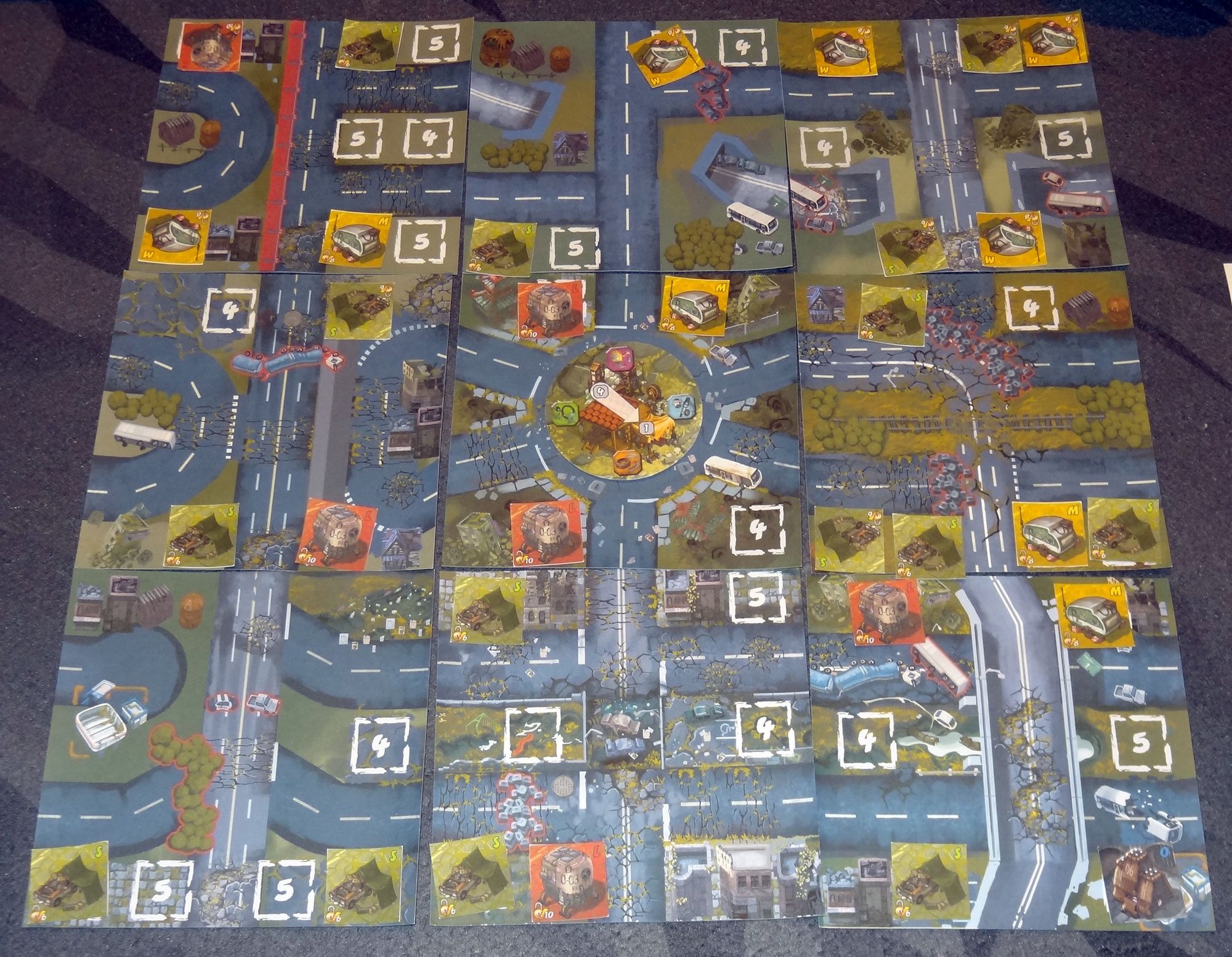
You set up the 9 map tiles with the black market tile in the center, and then randomly place one of the black market tiles in the ring in the center of the board. Anything on the map with a red outline around it is considered a barrier, and characters move along the roads. You’ll use a number of small, medium, and large houses placed on the board, plus one outpost. If you have four players, you leave open the spaces marked “5,” and if you have three players, you’ll also leave open the spaces marked “4.”
The raid cards are shuffled and set aside in their respective piles: small, medium, and large. You also shuffle the Global Events and turn two face up, shuffle the Incidents and set those aside, and shuffle the Quest Cards and turn three face up. All the resource tokens are placed into the bag and mixed up.
Each player takes a character board plus the associated item cards, combat die, and miniature. Your character board has three dials: Skill starts at 0, Favor/Blacklist starts at 0, and Action Points starts at 15. The Favor/Blacklist dial tracks your reputation, and can be dialed toward Favor (up to 10) or toward Blacklist (up to 10). Choose a starting player at random; on future rounds, the starting player is the one with fewest resources.

At the beginning of the round, everyone should reset their Action Points to 15. (Some items will give you additional AP.)
The starting player looks at the two face-up Global Event cards, chooses one to put into play, and discards the other. The Global Event affects all players for that round.
On your turn, you may spend your Action Points to move, raid, attack other players, craft items, trade, and take some special outpost-related actions, in any order. You may also fulfill Quests, which does not require any Action Points. Each turn, you may move (optionally) and make 1 action, and then play passes to the next player, until nobody has AP left. Then the round ends, everyone refreshes to 15 AP, and the player with fewest resources becomes the new starting player for the next round.
Move: move along the roads, spending 1 AP for each tile border or barrier you cross.
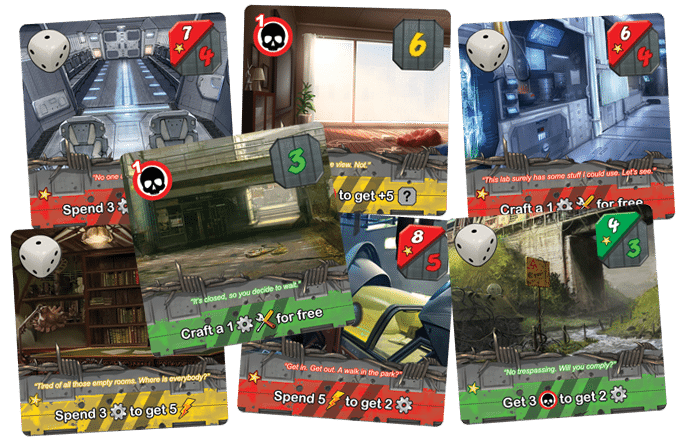
Raid: You may raid any house that you can reach without crossing tile borders or barriers, but only if you have below 8 Blacklist points. It costs 6, 8, or 10 AP to raid small, medium, and large houses, respectively. Spend the AP, and then draw a card that matches the house you’re raiding. Some show a die, in which case you have a 50-50 chance of succeeding. Succeed, and you get the higher number of resources (drawn randomly from the bag) plus an effect (usually optional), and then the house tile is removed from the game. Fail, and you get a smaller number of resources, no effect, and the house remains. Other raid cards show a black skull and a number—either you take that many Blacklist points to raid the house and get its resources and effects, or you may choose not to raid it and gain a favor point, putting the card back on top of the deck.
Attack: Attacking other players costs 5 AP plus a gun icon, and it costs the defender 3 AP plus a gun icon to roll the combat die for defense. You may attack a player if you can reach them without crossing a tile border or barrier. You roll your combat die for attack, and consult the chart to see what the symbols mean. Each face has an attack icon and a defense icon, and both the attacker and defender may get bonuses or effects from what they rolled. A successful attack lets you steal either a credit disc or some resources. Other effects may include crafting items for free, destroying another player’s items, stealing crafted items, and gaining more AP.
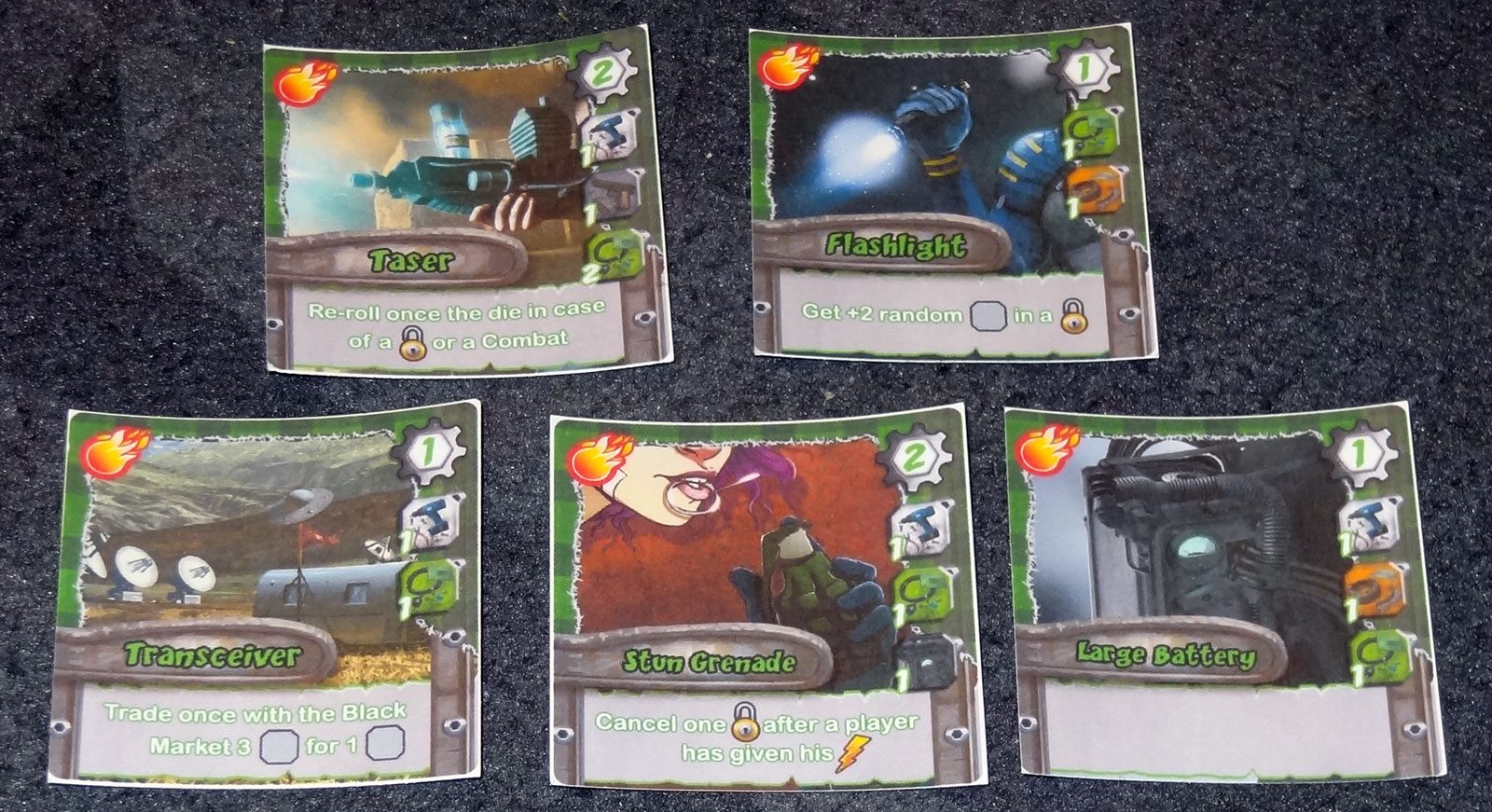
Craft: Spend 1 AP per item. You may only craft items that belong to your character. Spend the appropriate resources, and then take the item card. Items with a fireball icon are one-time-use and are discarded (out of the game) when used for their effects. Also, when you craft an item, you immediately gain the number of skill points indicated in the gear. (Skill points are not lost when the item is used.)
Trade: You may trade resources and item cards with other players as long as you’re not in the Outpost. It costs 1 AP for each player (though trading with Garcia, the trader, is free). If you can’t reach an agreement on a trade, then nobody spends AP. You may also trade with the black market—you must be on the center tile, and then you can spend any 4 resource for any 1 resource shown on the black market tile, at a cost of 1 AP per trade.
Outpost: Only one person can be in the outpost at a time. It costs 5 AP to get into the outpost once you reach it. Once inside, you may spend 8 AP to get a credit disc, which is worth Favor points—the sooner you buy one, the more points it’s worth. Or you may spend 10 AP to be a medical lab rat and test new medicine, earning you 2 Favor points. While inside the outpost, you cannot be attacked in the normal way.
If there is another player in the outpost when you reach it, you may attack the outpost for 7 AP. The player inside must leave, and pay 3 resource to the attacker. The attacker immediately gains 3 Blacklist points.
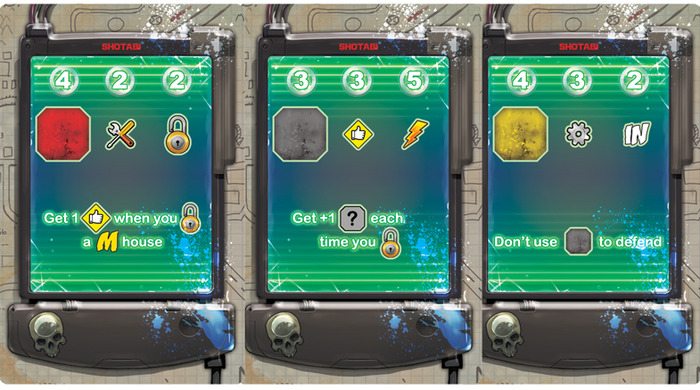
To fulfill a Quest, you need to collect the number of resources (or fulfill the requirements) shown on the card. Take the card and replace it with another from the deck. You then get the special effect shown on the Quest card.
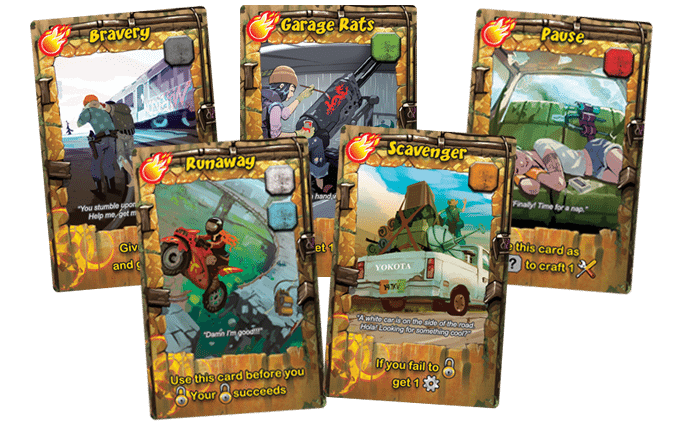
At the end of the entire round, each player draws two Incident cards and keep one. Incident cards generally give you some sort of bonus.
Food tokens may be spent for extra AP at any time. You can also get AP from some of the crafted items, though not all players have AP-related items to craft.
As soon as somebody triggers a victory condition (and has 20 AP to spend), the game ends immediately and that player wins.
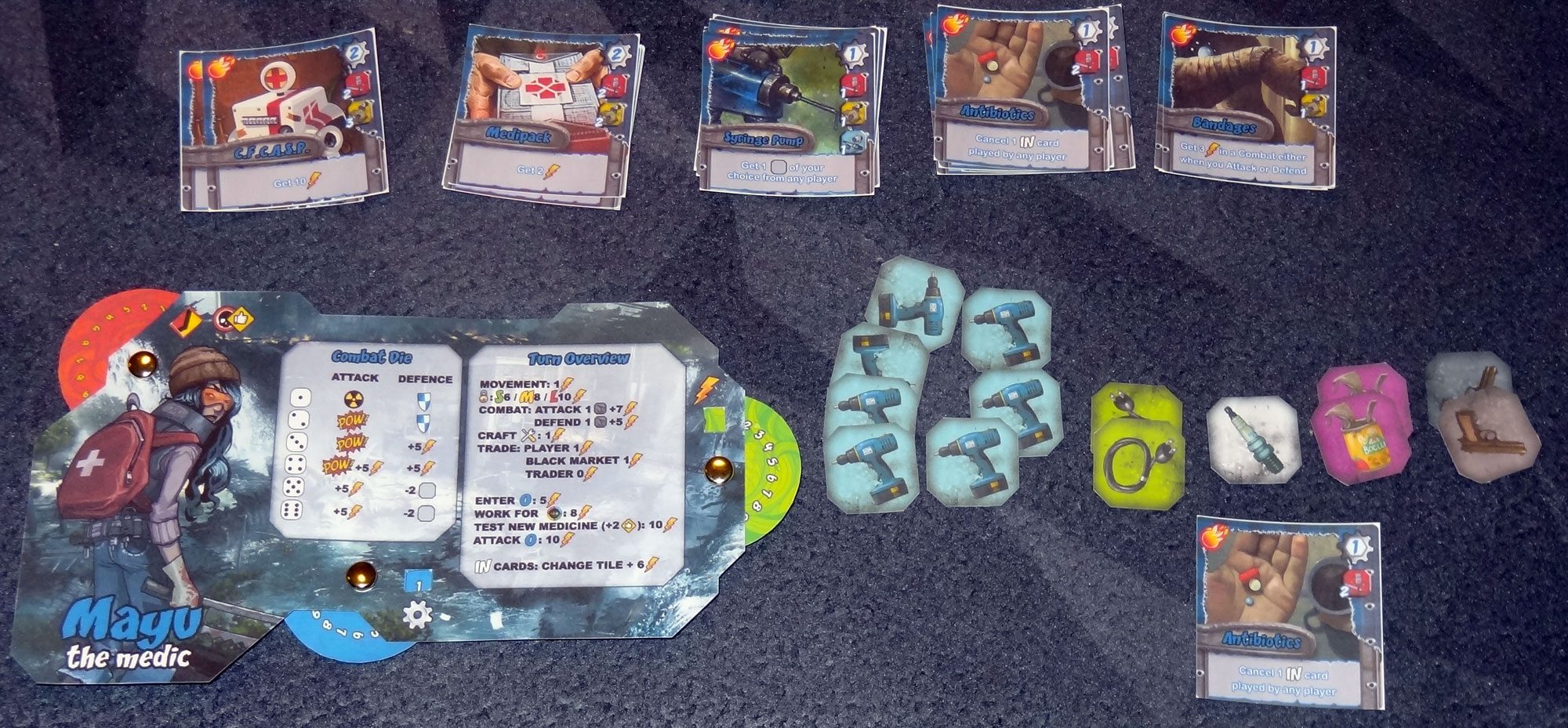
The Verdict
I haven’t gotten to play Raid & Trade much yet but since the Kickstarter campaign only has about a week to go, I figured I’d better just give you my first impressions. I like the overall concept, and the way that there are a couple different paths to victory. Generally you’re going to get blacklist points as you acquire resources: some houses require it, and some will allow you to take extra blacklist points to get extra resources. So if you’re going for favor points, you really need to manage your reputation well. Completing quests is a good middle-ground. Some quests require you to have a certain number of favor points, but others are just about collecting resources, Incident cards, or action points, and that allows for some flexibility.
It does seem a little strange, thematically, that you can’t raid houses if your blacklist points are too high—I think it might make more sense for that to be true of Quests—but I suppose there needs to be some sort of penalty there. The Outpost is a place where you can just spend action points to acquire favor points, but if you try to camp out there then somebody’s bound to come kick you out, particularly because attacking an outpost is a guaranteed success (as opposed to regular attacks, which rely on a die roll).
Our particular game didn’t involve a lot of attacking—I think with the number of houses to raid, we were more keen on raiding than trying to steal resources from other players. On top of that, the other players didn’t always have resources we actually needed to craft our items, so even success wasn’t always worth it. I think with more players, you may end up deciding more to attack each other (although there are more houses on the board, too).
I really like the way that each character has different strengths and weaknesses, represented by their custom combat die and the items that they can craft. Carter, the bodyguard, has a lot of successes on his attacks—two automatic successes, and the rest succeed as long as the defender doesn’t roll a shield. Mayu, the medic, is able to craft things that give her extra action points, including a few that are permanent bonuses rather than one-time use. Jake, the mechanic, has even more items that give extra action points, plus the very useful engine that can be used as a wild resource for crafting. Garcia, the trader, can trade for free, but also has other sneaky ways to get resources. And Zoey, the electrician, can mess with other people’s raids or get extra stuff on raids. It’s a good mix of abilities, and although I haven’t played it enough to know how well-balanced the different characters are, I like the idea that you have different avenues to victory and that each character specializes in different things.
The game is definitely intriguing enough that I want to try it again, especially trying out different characters, and see how different strategies will play out. I think it’s also a game that will change depending on your opponents: if you’ve got a bunch of conflict-shy players, you’ll do more raiding and trading and less attacking; with more aggressive players, expect a lot of attacks and “take that” incident cards.
For more about Raid & Trade, visit the Kickstarter page.
Disclosure: GeekDad received a demo prototype of this game for review.
